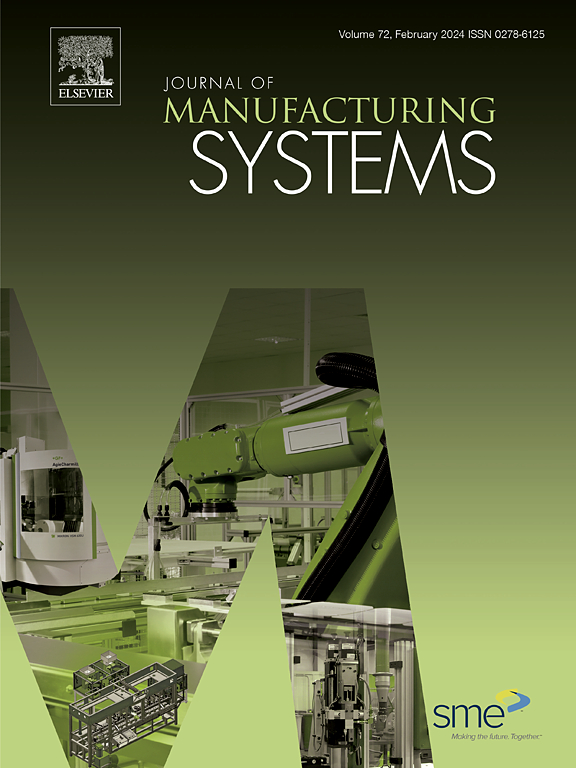SFRGNN-DA: An enhanced graph neural network with domain adaptation for feature recognition in structural parts machining
IF 14.2
1区 工程技术
Q1 ENGINEERING, INDUSTRIAL
引用次数: 0
Abstract
Optimizing the recognition of machining features in structural parts is vital for enhancing the efficiency of NC machining planning and ensuring quality control. However, the inherent complexity and stringent precision requirements of these parts often render existing feature recognition methods inadequate for accurately identifying model features. To address this challenge, a novel graph neural network model (SFRGNN) is introduced. The methodology begins with a specialized feature extraction module that captures both geometric and topological properties of the parts, providing a comprehensive basis for further analysis. Following this, SFRGNN integrates a graph neural network with a Spatial Self-Attention (SSA) module, a configuration designed to enhance the extraction of high-level semantic information crucial for accurately distinguishing machining features. This network architecture allows SFRGNN to interpret complex feature relationships with improved precision. Additionally, an enhanced domain adaptation module (DA) is incorporated to improve SFRGNN’s generalization capabilities and performance in machining feature recognition. Numerous experiments on different data sets confirmed that SFRGNN achieved excellent accuracy in identifying real-world structural part features and demonstrated enhanced performance, which will be helpful for subsequent process planning for part features in real-world scenarios.
SFRGNN-DA:用于结构件加工特征识别的增强域自适应图神经网络
优化结构件加工特征识别对于提高数控加工规划效率和保证质量控制至关重要。然而,由于这些零件固有的复杂性和严格的精度要求,现有的特征识别方法往往无法准确识别模型特征。为了解决这一挑战,引入了一种新的图神经网络模型(SFRGNN)。该方法从一个专门的特征提取模块开始,该模块捕获部件的几何和拓扑属性,为进一步分析提供全面的基础。在此之后,SFRGNN将图神经网络与空间自注意(SSA)模块集成在一起,该模块旨在增强对精确识别加工特征至关重要的高级语义信息的提取。这种网络架构使SFRGNN能够以更高的精度解释复杂的特征关系。此外,为了提高SFRGNN在加工特征识别中的泛化能力和性能,还引入了增强的域适应模块(DA)。在不同数据集上的大量实验证实,SFRGNN在识别真实世界结构件特征方面取得了优异的准确性,并展示了增强的性能,这将有助于在真实世界场景中进行零件特征的后续工艺规划。
本文章由计算机程序翻译,如有差异,请以英文原文为准。
求助全文
约1分钟内获得全文
求助全文
来源期刊

Journal of Manufacturing Systems
工程技术-工程:工业
CiteScore
23.30
自引率
13.20%
发文量
216
审稿时长
25 days
期刊介绍:
The Journal of Manufacturing Systems is dedicated to showcasing cutting-edge fundamental and applied research in manufacturing at the systems level. Encompassing products, equipment, people, information, control, and support functions, manufacturing systems play a pivotal role in the economical and competitive development, production, delivery, and total lifecycle of products, meeting market and societal needs.
With a commitment to publishing archival scholarly literature, the journal strives to advance the state of the art in manufacturing systems and foster innovation in crafting efficient, robust, and sustainable manufacturing systems. The focus extends from equipment-level considerations to the broader scope of the extended enterprise. The Journal welcomes research addressing challenges across various scales, including nano, micro, and macro-scale manufacturing, and spanning diverse sectors such as aerospace, automotive, energy, and medical device manufacturing.
 求助内容:
求助内容: 应助结果提醒方式:
应助结果提醒方式:


